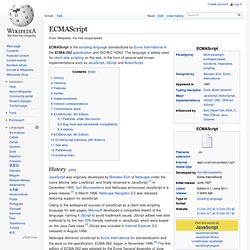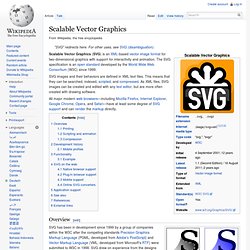

CSS3 . Info - All you ever needed to know about CSS3. HTML5 Presentation. In March 1936, an unusual confluence of forces occurred in Santa Clara County.

A long cold winter delayed the blossoming of the millions of cherry, apricot, peach, and prune plum trees covering hundreds of square miles of the Valley floor. Then, unlike many years, the rains that followed were light and too early to knock the blossoms from their branches. Instead, by the billions, they all burst open at once.
HTML 5 <article> Tag. The HTML <article> tag is used to represent an article.

More specifically, the content within the <article> tag is independent from the other content on the site (even though it could be related). By "independent" I mean that its contents could stand alone, for example in syndication. Examples of article content could include a forum post, a newspaper article, a blog entry, or a user-submitted comment. The <article> tag was introduced in HTML 5. Demo Attributes HTML tags can contain one or more attributes. There are 3 kinds of attributes that you can add to your HTML tags: Element-specific, global, and event handler content attributes. The attributes that you can add to this tag are listed below.
Element-Specific Attributes. ECMAScript. History[edit] JavaScript was originally developed by Brendan Eich of Netscape under the name Mocha, later LiveScript, and finally renamed to JavaScript.[1] In December 1995, Sun Microsystems and Netscape announced JavaScript in a press release.[2] In March 1996, Netscape Navigator 2.0 was released, featuring support for JavaScript.

Owing to the widespread success of JavaScript as a client-side scripting language for web pages, Microsoft developed a compatible dialect of the language, naming it JScript to avoid trademark issues. JScript added new date methods to fix the non-Y2K-friendly methods in JavaScript, which were based on the Java Date class.[3] JScript was included in Internet Explorer 3.0, released in August 1996.
Netscape delivered JavaScript to Ecma International for standardization and the work on the specification, ECMA-262, began in November 1996.[4] The first edition of ECMA-262 was adopted by the Ecma General Assembly of June 1997. Versions[edit] Features[edit] Syntax[edit] Scalable Vector Graphics. Scalable Vector Graphics (SVG) is an XML-based vector image format for two-dimensional graphics with support for interactivity and animation.

The SVG specification is an open standard developed by the World Wide Web Consortium (W3C) since 1999. SVG images and their behaviors are defined in XML text files. This means that they can be searched, indexed, scripted, and compressed. As XML files, SVG images can be created and edited with any text editor, but are more often created with drawing software. Overview[edit] This image illustrates the difference between bitmap and vector images. SVG has been in development since 1999 by a group of companies within the W3C after the competing standards Precision Graphics Markup Language (PGML, developed from Adobe's PostScript) and Vector Markup Language (VML, developed from Microsoft's RTF) were submitted to W3C in 1998. Since 2001, the SVG specification has been updated to version 1.1. HTML5 Doctor, helping you implement HTML5 today.
HTML5 Tutorial. HTML5 is the latest and most enhanced version of HTML.Technically, HTML is not a programming language, but rather a mark up language.

This tutorial has been designed for beginners in HTML5 providing the basic to advanced concepts of the subject. Before starting this tutorial you should be aware of the basic understanding of HTML and its tags You do not need to have your own environment to start learning HTML5 programming! We have set up an on-line compiler for you that can be used to compile and execute the programs on-line. For most of the examples available in this tutorial, you will find a Try it option at the top right corner of the code box. <! HTML5. HTML5.
HTML5 is a markup language used for structuring and presenting content for the World Wide Web and a core technology of the Internet. It is the fifth revision of the HTML standard (created in 1990 and standardized as HTML 4 as of 1997)[2] and, as of December 2012[update], is a candidate recommendation of the World Wide Web Consortium (W3C).[3] Its core aims have been to improve the language with support for the latest multimedia while keeping it easily readable by humans and consistently understood by computers and devices (web browsers, parsers, etc.). HTML5 is intended to subsume not only HTML 4, but also XHTML 1 and DOM Level 2 HTML.[2] History[edit] The Web Hypertext Application Technology Working Group (WHATWG) began work on the new standard in 2004. At that time, HTML 4.01 had not been updated since 2000,[8] and the World Wide Web Consortium (W3C) was focusing future developments on XHTML 2.0.
While HTML5 is often compared to Flash, the two technologies are very different. HTML5 Demos and Examples.